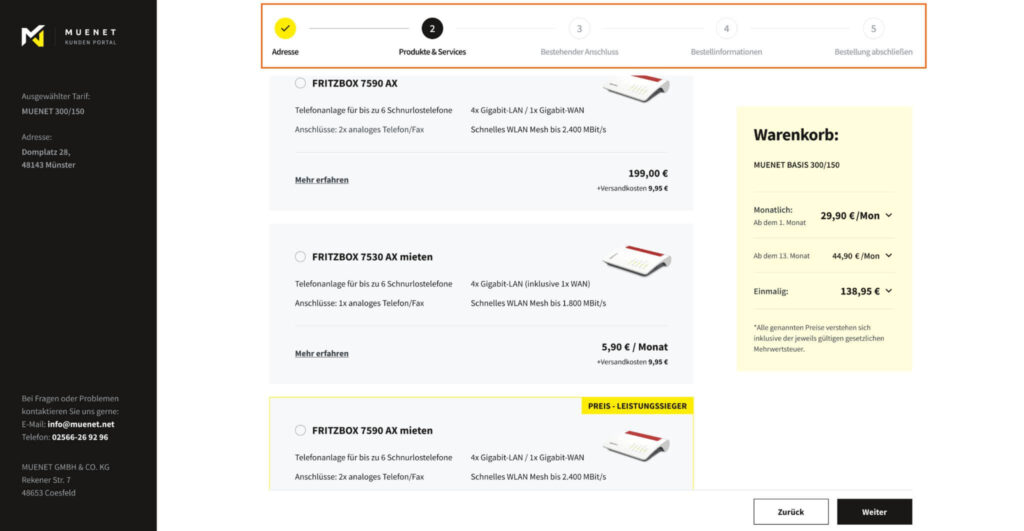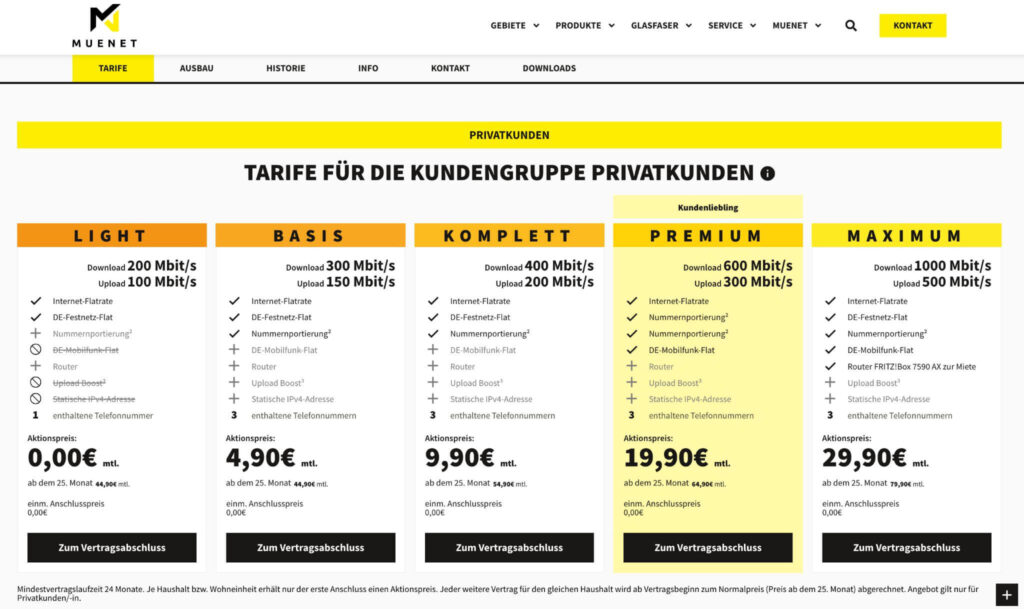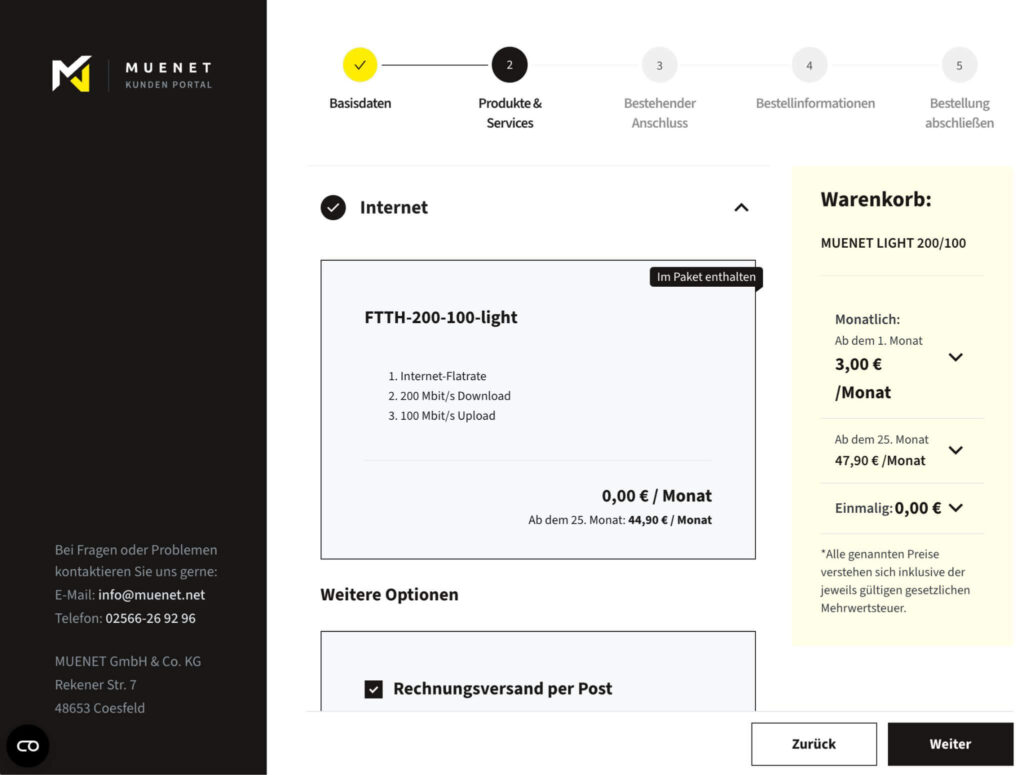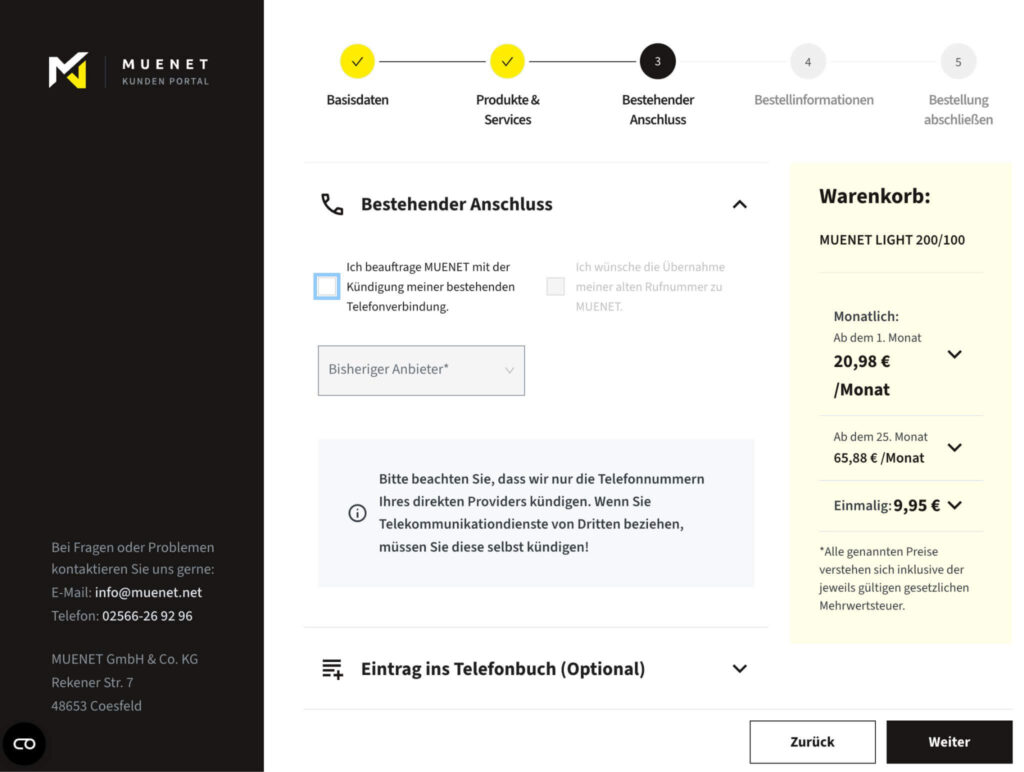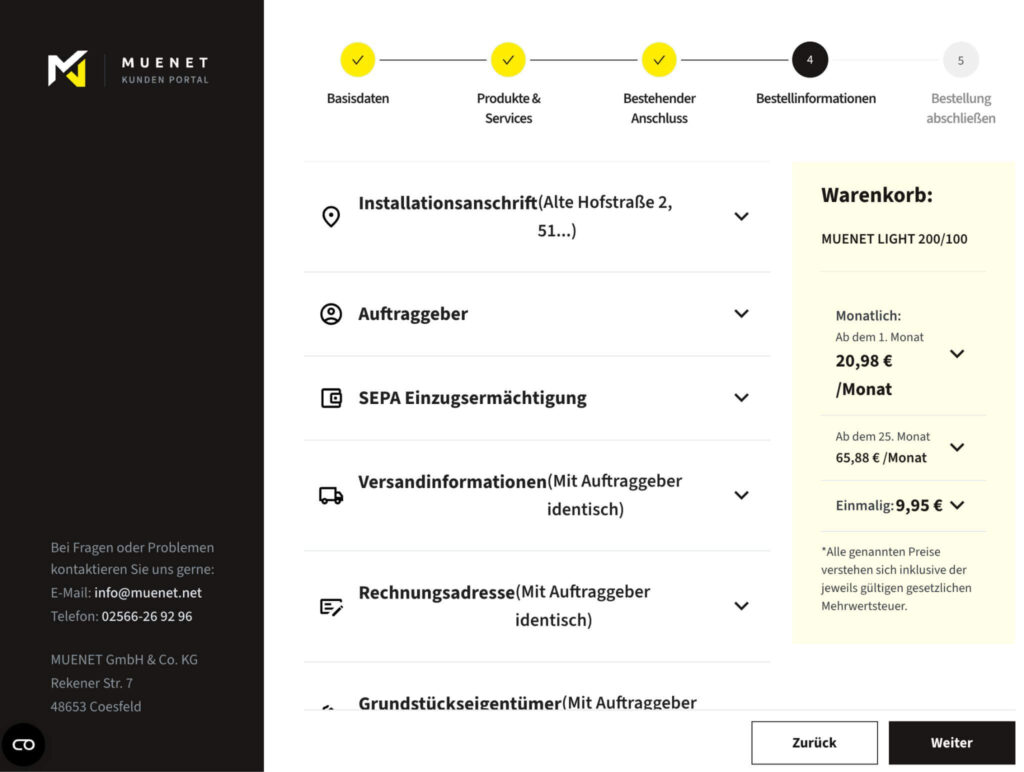DE
- Industries
- Finance
Nearshore software development for finance—secure, scalable, and compliant solutions for banking, payments, and APIs.
- Retail
Retail software development services—e-commerce, POS, logistics, and AI-driven personalization from nearshore engineering teams.
- Manufacturing
Nearshore manufacturing software development—ERP systems, IoT platforms, and automation tools to optimize industrial operations.
- Finance
- What we do
- Services
- Technologies
- Collaboration models
Explore collaboration models customized to your specific needs: Complete nearshoring teams, Local heroes from partners with the nearshoring team, or Mixed tech teams with partners.
- Way of work
Through close collaboration with your business, we create customized solutions aligned with your specific requirements, resulting in sustainable outcomes.
- About Us
- Who we are
We are a full-service nearshoring provider for digital software products, uniquely positioned as a high-quality partner with native-speaking local experts, perfectly aligned with your business needs.
- Meet our team
ProductDock’s experienced team proficient in modern technologies and tools, boasts 15 years of successful projects, collaborating with prominent companies.
- Our locations
We are ProductDock, a full-service nearshoring provider for digital software products, headquartered in Berlin, with engineering hubs in Lisbon, Novi Sad, Banja Luka, and Doboj.
- Why nearshoring
Elevate your business efficiently with our premium full-service software development services that blend nearshore and local expertise to support you throughout your digital product journey.
- Who we are
- Our work
- Career
- Life at ProductDock
We’re all about fostering teamwork, creativity, and empowerment within our team of over 120 incredibly talented experts in modern technologies.
- Open positions
Do you enjoy working on exciting projects and feel rewarded when those efforts are successful? If so, we’d like you to join our team.
- Candidate info guide
How we choose our crew members? We think of you as a member of our crew. We are happy to share our process with you!
- Life at ProductDock
- Newsroom
- News
Stay engaged with our most recent updates and releases, ensuring you are always up-to-date with the latest developments in the dynamic world of ProductDock.
- Events
Expand your expertise through networking with like-minded individuals and engaging in knowledge-sharing sessions at our upcoming events.
- News
- Blog
- Get in touch
MUENET for all – building a customer portal with high speed.

About.
What does the client do? What industry?
MUENET is a telecommunications company based in Coesfeld, in the Münsterland region of Germany. It specializes in providing high-speed internet through fiber-optic networks, primarily serving rural and suburban areas where such infrastructure is often lacking. The company has connected over 20,000 households in regions like North Rhine-Westphalia, Lower Saxony, and Rhineland-Palatinate.
Founded by Patrick Nettels and Laslo Müther in 1996, MUENET emphasizes personalized service and local engagement, often hosting community events and offering in-home consultations to ensure customers receive the best possible internet solutions. Their services include internet, phone, and television options, all delivered through advanced fiber technology.
Initial situation.
What was the current state? What was the team structure?
MUENET has a website showcasing their services. However, despite its digital presence, they were still closing contracts through face-to-face interactions with sales agents and manual, paper-based processes. This approach was not only time-consuming but also prone to inefficiencies and errors in the sales process.
To overcome these challenges, MUENET reached out to us to discuss the possibility of creating a customer portal that would allow users to sign up online, reducing the efforts of sales agents and minimizing paperwork.
The collaboration began with a workshop in October 2023, where the ProductDock team worked closely with MUENET’s representatives to understand their requirements and prioritize the features for the new portal.
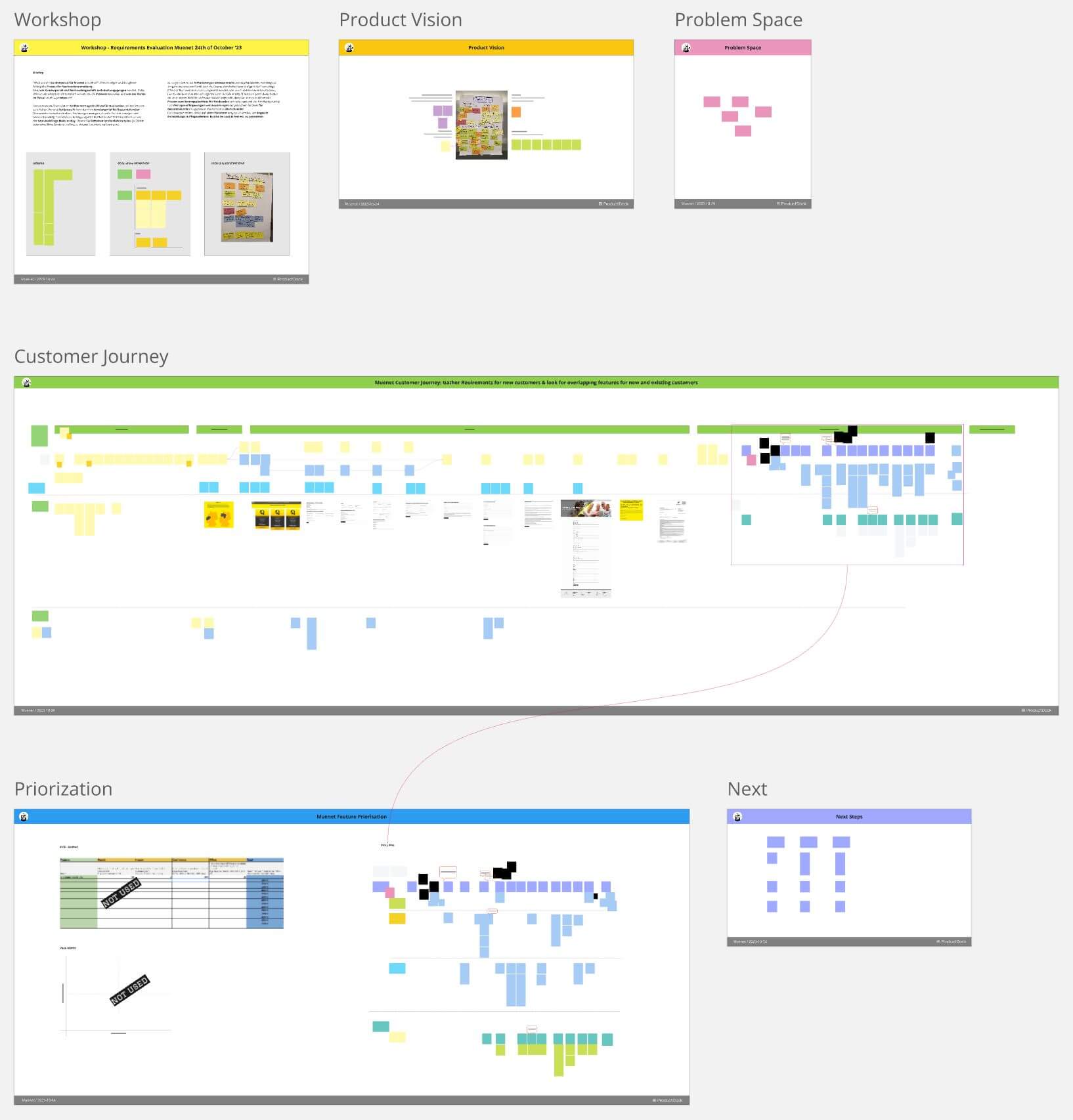
In December 2023, the development team began working using a complete Nearshoring team model. The team initially comprised three members from ProductDock: one Backend Engineer, one Frontend Engineer, and a UX/UI colleague providing design support. Later, the setup evolved into a joint team, with a Product Owner from the MUENET side to improve collaboration and alignment.
Problem space.
What problem did you want to solve?
MUENET had been growing steadily, but its manual onboarding and contract processes were hindering growth, increasing sales costs, and limiting scalability. To overcome these challenges, MUENET envisioned a digital solution that would allow customers to sign contracts online and enable sales agents to input new customer data directly into the portal. This solution aimed to streamline operations and improve the customer experience.
MUENET’s expectations:
- First: customer self-registration
- Next: customer registration facilitated by sales agents
- Later: customer self-service capabilities with upselling opportunities
Solution.
What did you do? What technologies did you use? How long did it take?
The main challenge was that competitors already had well-established digital solutions, so we needed to act quickly. To accelerate progress, we decided to build the customer portal in iterative phases instead of waiting for a single, large-scale release. This allowed us to test user experience early and make adjustments along the way.
To validate the investment in a customer portal, we aimed to launch an MVP with basic self-registration features, going live within just three weeks. Proof point: 20% of new contracts were processed through self-service within the first four weeks.
Phase one: Discover and define
The first step was to collect all Business requirements, identify value for both the user and the business, outline the to-do tasks and map the user journey, and analyze the competitors on the market.

After identifying and defining the problem to be solved, we moved into the ideation phase. During this phase, we explored various concepts and selected the most promising ones to move forward with. We also established the core elements of the Design System, including colors, typography, spacing, grids, etc. This will be expanded with new components during the process ensuring that our design remains scalable, easy to maintain and update, while keeping our design decisions transparent and centralized.
We approached every component with accessibility in mind, always taking care that we have at least a minimum contrast ratio required for people with disabilities.
Here are some UX challenges we encountered during the process:
-
- The primary challenge was organizing and simplifying lengthy content for easier navigation. To address this, we implemented accordion items, with the first one opened by default, allowing users to easily see remaining sections. Optional sections were clearly marked to streamline the checkout process.
- The primary challenge was organizing and simplifying lengthy content for easier navigation. To address this, we implemented accordion items, with the first one opened by default, allowing users to easily see remaining sections. Optional sections were clearly marked to streamline the checkout process.
-
- We grouped related items into “progress steps” to improve navigation and provide greater transparency. These “Progress steps” remain fixed while scrolling, keeping users informed of where they are, while the “Back” and “Next” buttons are sticky for easy access.
- We grouped related items into “progress steps” to improve navigation and provide greater transparency. These “Progress steps” remain fixed while scrolling, keeping users informed of where they are, while the “Back” and “Next” buttons are sticky for easy access.
-
- We fixed the “shopping basket” so it remains visible during scrolling, providing users with a clear view of the costs they can expect:
- We fixed the “shopping basket” so it remains visible during scrolling, providing users with a clear view of the costs they can expect:
- We introduced inline notifications to help users in completing the application form, providing feedback and context through error, success or warning messages:
Phase two: Develop and deliver
To ensure a lightweight and efficient technical solution, we containerized everything using Docker, while all the containers are being orchestrated and managed by Docker Compose on machines provided by MUENET. This approach allowed us to avoid the complex cloud infrastructure while focusing on delivering a flexible and fast solution. All services are versionized, configured, deployed and rolled out via GitHub actions (configuration & infrastructure as code).
The chosen technical stack for the frontend development is React, while we used Python for the backend APIs, allowing us to use widely accepted and future-proof technologies. The decision to use Python was based on MUENET’s existing familiarity with the language. We also introduced the FastAPI framework, which stood out due to its lightweight and easy-to-use nature, especially for beginners.
The customer portal was developed from scratch while integrating with MUENET’s existing APIs, using the Python API as middleware to facilitate seamless connections:
Our design aimed to make all components flexible and fast, with the frontend relying solely on data provided by MUENET. This meant that if new services were added in the future, MUENET could simply update their database without requiring additional development effort. To achieve this, we created a Python API middleware to act as an intermediary between the frontend and MUENET’s internal APIs, enhancing the security of the application by preventing direct communication between the MUENET database and the frontend. By decoupling the customer portal from MUENET’s backend and introducing a cache for products and services, the portal is highly performant and independent from internal systems.
For users, the process began by visiting the existing website. They entered their address, chose their package, and were then redirected to the new customer portal. The frontend would then ping our Python API with their chosen service package, which would in turn interact with internal APIs and return answers for display on the frontend.
Existing website: user chooses contract:
Customer portal: user is redirected to do the check-out
To manage all of this, the Python middleware was responsible for performing data transformations and heavy validation to cover all conditional rules, as some contract packages excluded certain services. The priority was to ensure that we didn’t lose any customers during the user journey due to errors on the website. As we encountered errors that customers couldn’t resolve on their own, we needed to implement a solution that would handle these issues without disrupting the user experience. We solved this by introducing a retry mechanism within the middleware to handle cases where internal APIs were temporarily unavailable, ensuring that customers wouldn’t be affected even if errors occurred, while still guaranteeing the successful creation of contracts.
To further improve our solution, we implemented email notifications for MUENET Support whenever errors that couldn’t be fixed by multiple retries occurred. This enabled them to quickly identify and resolve issues, reducing the need for manual log checking.
The first release was completed in February, making the MVP of the customer portal take approximately two months to develop.
Results.
What was the outcome?
Business outcome
The customer portal proved its value very quickly. Just a few weeks after launch, several hundred contracts had been successfully completed via the portal. Users didn’t encounter any major issues during the process, resulting in a high completion rate.
From a business perspective, the customer portal made it possible to reach a new, tech savvy target group that could not be reached through selling agents. It also allowed MUENET to expand its business without increasing the number of sales agents, preserving funds that will be reinvested in new digital solutions.
Summary outcome:
- High completion rate
- No major issues for customers
- Reduced errors (by typing from hand-written registration forms), direct address & IBAN validation
- More contracts, by winning especially more digitally savvy customers
- Enabled business growth
- Stronger market position
Collaboration outcome
The collaboration with MUENET started with a clear goal and a progressive strategy to achieve it.
We adopted a rapid development approach: “One day – One sprint” (so called Micro-Sprints) where we committed to specific tasks each day and delivered results by the end of the day. That approach worked well in the early stages as the project was initially intended to last three weeks, only. At that point, there was no need for more routines or a board to track features. However, as the project timeline extended due to new ideas emerging and some delays caused by internal API readiness, we encountered difficulties to keep track of all information and progress.
The biggest challenge came after two months when it became critical to deliver a functional app to production in order to meet investor expectations and demonstrate its value. Even though this release-deadline increased pressure on everyone, which required us to put in extra hours, we successfully delivered the product on time, satisfying the investors, our client and ourselves since we all were proud that we made it.
After the release, we transitioned into a more regular and structured product development process. Our team at ProductDock worked closely with MUENET to establish a well-defined approach using SCRUM events and introduced sprints to break down the work into manageable tasks. We documented each feature and logged the process on a board, which helped clarify the end product and gave MUENET more insight into what they wanted to achieve.
The client was pleasantly surprised by how the customer portal had been used, especially by sales agents who incorporated it into their workflow. Throughout the process, we implemented numerous features beyond the initial scope, adapting to the client’s evolving needs and goals. This helped in streamlining the MUENET team operations, reducing manual work and increasing efficiency.
Currently, we are working on the second part of the project, which involves adding an account feature for those customers who already have a contract to make contract adjustments, update services, or change personal details. For this, we are integrating Keycloak as an identity and access management solution.
Overall, our team was able to transform a vague idea into a fully-fledged application that exceeded MUENET’s initial expectations. Meanwhile, over 2000 contracts have been signed, and the sales agents were happy to replace a lot of manual work due to an upload feature that we’ve implemented for them.
What are your lessons learned?
- Python turned out to be a revelation: Coming from Java, our default language and ecosystem, we appreciated how Python’s lightweight and fast nature helped with prototype development and API creation.
- Redis magic: Just before go-live, we faced a performance issue with data aggregation slowing down APIs every time a customer visited the portal. To avoid delays visible to customers, we set up Redis in three hours, caching data and reducing load times from seconds to milliseconds, solving the problem just in time.
- Structure mitigates misalignment: We started with daily sprints for a three-week project, including large dailies with stakeholders. This quick approach led to missing important details, causing misaligned expectations. We learned that structure is key: introducing proper Scrum events (smaller dailies, sprint planning, refinements) improved communication, tracking, and clarity.
- Task breakdown speeds up delivery: We started with broad tasks on a Miro board, which gave a rough overview, but lacked clarity. As questions arose late, they were answered late and thus slowed down the progress. The lesson: breaking tasks into smaller tickets improves transparency, speeds up problem-solving, and helps track who is working on what, ensuring smoother collaboration.
- Sprints are not essential: It was acceptable not to have two-week sprints at the beginning, as APIs and endpoints weren’t ready, so if we worked with mocked data, sprints wouldn’t have helped. However, having tickets on a proper board and refinements is highly recommended.
- Retrospectives improve collaboration: Before we introduced Scrum, we held two retrospective meetings to understand the expectations of the whole team – both the client and ourselves. Conducting retrospectives helped refine processes, align expectations, and improve overall satisfaction among team members.
- A reliable network of support: In the beginning, we rushed our work, but we had a major advantage: our supportive colleagues. The MUENET team and stakeholders were always there for us, and we could rely on the expertise of our ProductDock and codecentric (our parent company) colleagues whenever we needed help or advice.

